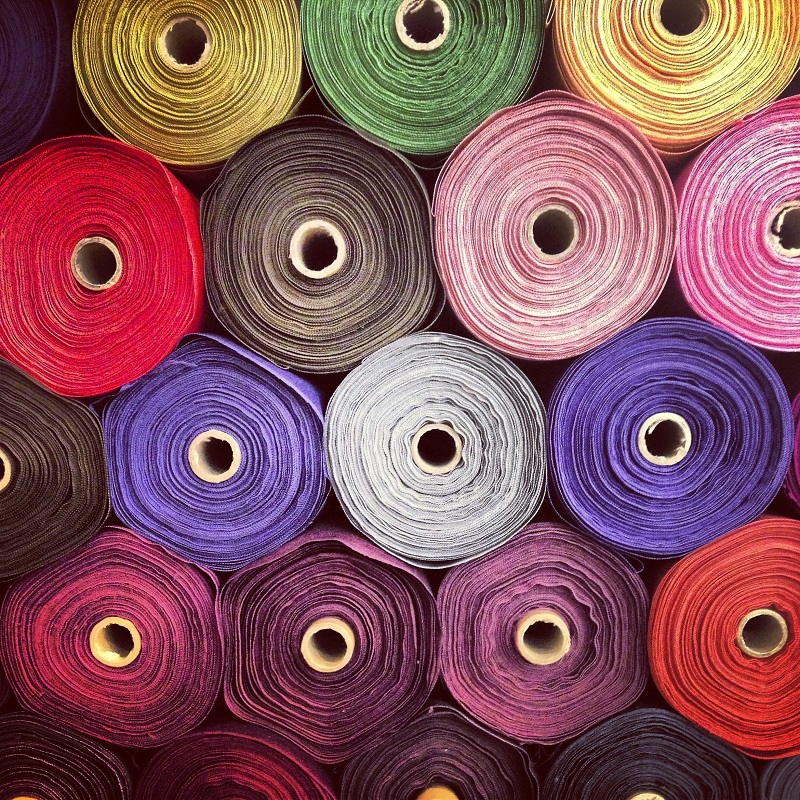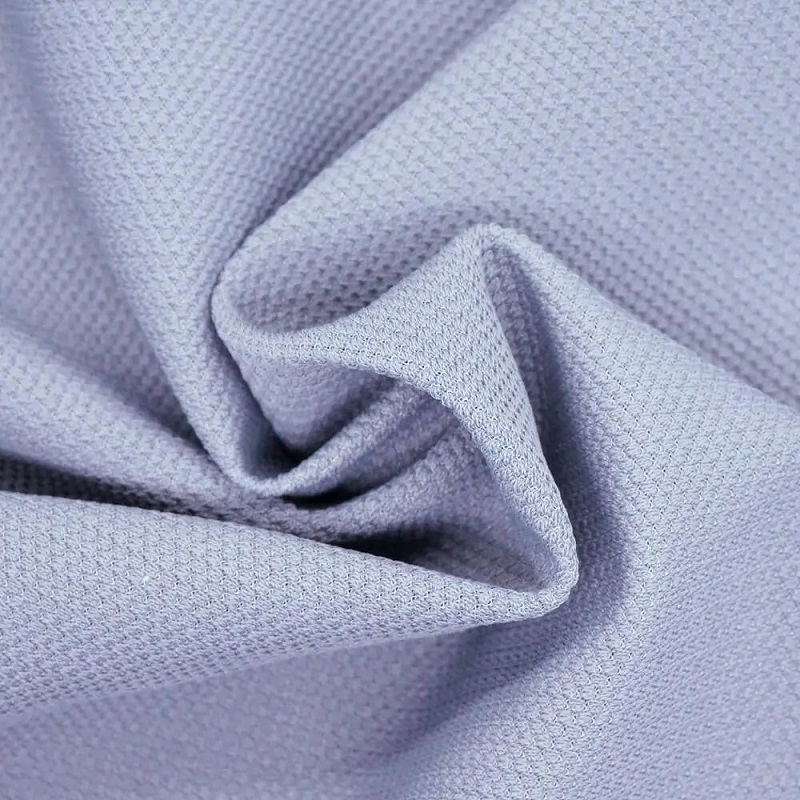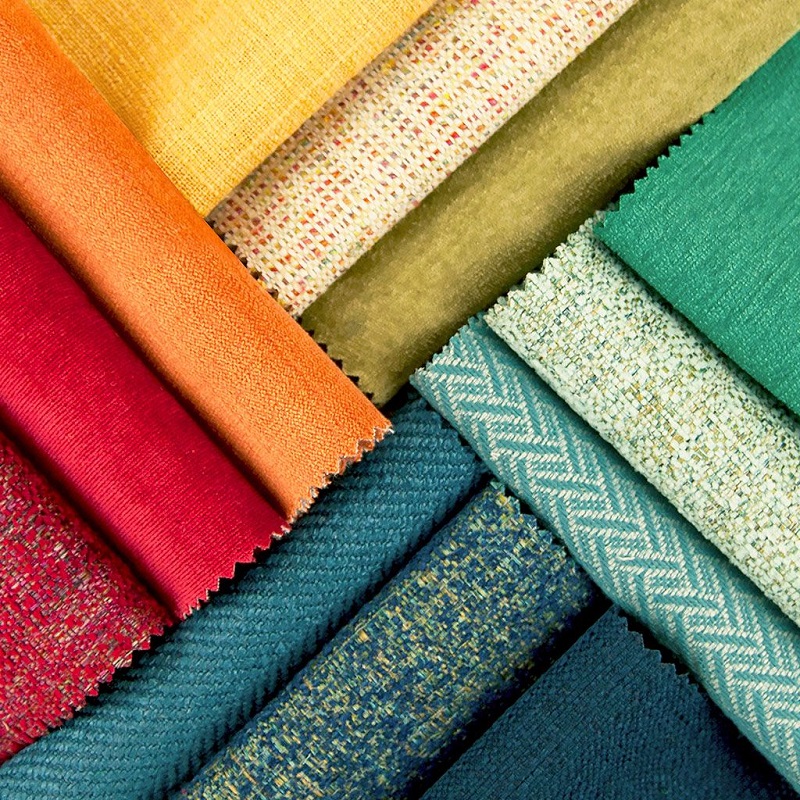In this comprehensive guide, we delve into the world of fabric product manufacturing, exploring the intricate process behind creating high-quality fabrics for various applications. From understanding the different types of fabrics and their properties to mastering the latest manufacturing techniques, this guide provides a detailed overview of everything you need to know about fabric product manufacturing. Discover the key factors that contribute to successful fabric production, including material selection, cutting, sewing, finishing, and quality control. Whether you’re a seasoned professional or just starting out in the industry, this guide is your go-to resource for staying up-to-date with the latest trends and best practices in fabric product manufacturing.
I. Introduction
A. The Importance of Fabric Product Manufacturing
Fabric product manufacturing plays a crucial role in various industries, ranging from fashion and apparel to interior design and automotive. It involves the creation of fabrics that are used to make a wide array of products, including clothing, upholstery, curtains, and more. The quality and characteristics of the fabric significantly impact the overall performance and appeal of the final product. Therefore, understanding the intricacies of fabric product manufacturing is essential for manufacturers, designers, and consumers alike.
B. Objectives of the Guide
The primary objective of this comprehensive guide is to provide a deep understanding of fabric product manufacturing.
II. Understanding Fabrics
A. Types of Fabrics
Fabrics can be classified into three main categories: natural fabrics, synthetic fabrics, and blended fabrics. Each type has its own unique characteristics and uses.
1. Natural Fabrics
Natural fabrics are derived from plant or animal sources and have been used for centuries. Examples of natural fabrics include cotton, silk, linen, and wool. These fabrics are known for their breathability, comfort, and eco-friendliness. Cotton is commonly used for making clothing due to its softness and durability. Silk is a luxurious fabric known for its smooth texture and lustrous appearance. Linen is lightweight and breathable, making it ideal for warm weather clothing. Wool is a natural insulator, making it suitable for winter wear.
2. Synthetic Fabrics
Synthetic fabrics are man-made materials created through chemical processes. They offer a range of advantages such as durability, wrinkle resistance, and moisture-wicking properties. Common synthetic fabrics include polyester, nylon, and acrylic. Polyester is widely used in clothing manufacturing due to its affordability, strength, and ease of care. Nylon is known for its strength and elasticity, making it suitable for activewear and hosiery. Acrylic is a synthetic alternative to wool, providing warmth and softness.
3. Blended Fabrics
Blended fabrics are a combination of natural and synthetic fibers. By blending different fibers, manufacturers can create fabrics with enhanced properties and performance. For example, a common blend is cotton-polyester, which combines the natural breathability of cotton with the durability and wrinkle resistance of polyester. Blended fabrics offer a balance between the advantages of both natural and synthetic fibers.
B. Properties of Fabrics
Understanding the properties of fabrics is essential for fabric product manufacturing. Different properties determine the suitability of fabrics for specific applications. Here are some key properties to consider:
1. Weight
Fabric weight refers to the density of the material and is typically measured in grams per square meter (GSM). The weight of a fabric affects its drape, feel, and overall appearance. Lighter fabrics are often used for delicate garments and summer clothing, while heavier fabrics are preferred for upholstery and outerwear.
2. Durability
The durability of a fabric is its ability to withstand wear, tear, and repeated use. It depends on factors such as fiber strength, weave structure, and finishing techniques. Fabrics with high durability are suitable for applications that require longevity, such as upholstery and workwear.
3. Texture
Texture refers to the tactile surface characteristics of a fabric. It can be smooth, rough, or textured, influencing the overall look and feel of the product. Texture adds visual interest and can be used to create specific design effects. Fabrics with different textures are employed in various applications, including fashion, home decor, and accessories.
4. Moisture Absorption
The moisture absorption capability of a fabric determines its comfort in different environments. Fabrics with high moisture absorption wick away sweat and moisture from the body, promoting breathability and comfort. This property is particularly important for activewear, sportswear, and undergarments.
5. Flammability
Flammability refers to how easily a fabric ignites and sustains a flame. Fabrics can be categorized into different flammability classes based on their performance in fire resistance tests. Understanding the flammability properties of fabrics is crucial for ensuring safety in applications such as upholstery, bedding, and children’s clothing.
By comprehending these fabric properties, manufacturers can choose the most suitable materials for their specific product requirements, ensuring optimal performance, comfort, and safety.
III. Material Selection
A. Fiber Sourcing
The first step in fabric product manufacturing is sourcing the appropriate fibers. Natural fibers are obtained from various sources such as cotton plants, silkworms, flax plants, and animal fleece. These fibers can be harvested through processes like cotton picking, silk reeling, or shearing. Synthetic fibers, on the other hand, are manufactured through chemical processes using raw materials like petroleum or coal.
Fiber sourcing involves considerations such as sustainability, quality, and cost. Manufacturers may opt for organic or sustainably sourced fibers to meet consumer demands for environmentally friendly products. The quality of the fibers is crucial as it affects the strength, durability, and overall performance of the fabric. Additionally, cost considerations play a significant role in determining the feasibility of sourcing specific fibers.
B. Yarn Production
Once the fibers are sourced, they undergo yarn production. Yarn is made by spinning or twisting the fibers together to create a continuous strand. There are various methods of yarn production, including ring spinning, open-end spinning, and air-jet spinning.
Ring spinning is a traditional method that produces high-quality yarn with excellent strength and uniformity. Open-end spinning, also known as rotor spinning, is a faster and more cost-effective method suitable for producing yarns with a coarser texture. Air-jet spinning utilizes compressed air to spin the fibers into yarn and is commonly used for synthetic fibers.
During the yarn production process, additional treatments may be applied, such as blending different types of fibers, adding twists for strength, or introducing specialized finishes for specific properties like moisture-wicking or antimicrobial capabilities. These treatments enhance the performance and versatility of the yarn.
C. Dyeing and Printing Processes
After the yarn is produced, it can undergo dyeing or printing processes to add color, patterns, or designs to the fabric. Dyeing involves immersing the yarn or fabric in a dye bath, where the color is absorbed into the fibers. Various dyeing techniques exist, including vat dyeing, direct dyeing, and reactive dyeing. Each method has its own advantages and is chosen based on factors such as colorfastness, desired effects, and environmental considerations.
Printing, on the other hand, involves applying color or designs onto the fabric surface using pigments or dyes. Different printing techniques like screen printing, digital printing, and block printing are employed to achieve intricate patterns and vibrant colors. These processes require expertise in color mixing, design alignment, and precision to ensure consistent and visually appealing results.
Both dyeing and printing processes contribute to the aesthetic appeal of the fabric and allow manufacturers to create unique and customized designs. It is important to ensure that the dyeing and printing processes are carried out in compliance with environmental regulations to minimize their impact on ecosystems and human health.
IV. Cutting Techniques
A. Mechanical Cutting
Mechanical cutting is a traditional method of fabric cutting that utilizes mechanical tools such as scissors, knives, or rotary cutters. This technique is commonly used for small-scale production or in situations where precision cutting is not critical. Mechanical cutting allows for flexibility in cutting different shapes and sizes, but it may be time-consuming and less precise compared to modern cutting methods.
B. Digital Cutting
Digital cutting, also known as computerized cutting, has revolutionized the fabric cutting process. It involves the use of computer-controlled cutting machines equipped with specialized blades or laser cutters. The cutting patterns are created digitally and fed into the machine, which then performs precise and automated cutting based on the design specifications.
Digital cutting offers numerous advantages, including increased accuracy, speed, and cost-effectiveness. It enables manufacturers to create intricate and complex shapes with minimal material waste. The automation aspect also reduces the dependency on manual labor and improves overall production efficiency.
C. Laser Cutting
Laser cutting is a cutting-edge technique that utilizes high-powered lasers to cut through fabrics with precision and speed. The laser beam melts or vaporizes the material along the cutting line, resulting in clean and accurate cuts. Laser cutting is particularly suitable for delicate or intricate fabrics that require precise detailing.
One of the key advantages of laser cutting is its ability to create intricate designs and patterns without the need for physical contact with the fabric. This reduces the risk of fabric distortion or damage during the cutting process. Laser cutting also offers increased efficiency, as it can cut multiple layers of fabric simultaneously, saving time and labor costs.
However, it is important to note that laser cutting requires specialized equipment and expertise to ensure safety and optimal results. Proper ventilation and safety precautions should be in place to manage the emission of fumes or potential fire hazards.
By employing cutting techniques like mechanical cutting, digital cutting, or laser cutting, fabric manufacturers can achieve precise and efficient cutting processes, ensuring accurate shapes and sizes for their fabric products.
V. Sewing Techniques
A. Hand Sewing
Hand sewing is the oldest and most traditional method of joining fabric pieces together. It involves using a needle and thread to create stitches by hand. Hand sewing allows for meticulous control and attention to detail, making it ideal for delicate or intricate work. It is often employed in high-end fashion, couture garments, and specialized crafts. Skilled artisans can achieve precise and intricate stitching patterns through hand sewing, adding a unique touch of craftsmanship to fabric products.
B. Machine Sewing
Machine sewing has revolutionized the fabric manufacturing industry, significantly increasing production speed and efficiency. Sewing machines are equipped with various stitching techniques and features that allow for precise and durable seams. Here are some commonly used machine sewing techniques:
1. Overlocking
Overlocking, also known as serging, is a sewing technique used to prevent fabric edges from fraying. An overlocking machine trims the fabric edge while simultaneously encasing it with threads to create a neat and finished seam. Overlocking is commonly used in garment manufacturing to reinforce seams and provide a professional finish.
2. Serging
Serging is a similar technique to overlocking and is often used interchangeably. It involves using a serger machine to trim the fabric edges and encase them with threads for a clean and secure seam. Serging is particularly useful for knit fabrics or fabrics that are prone to fraying.
3. Zigzag Stitching
Zigzag stitching is a versatile sewing technique that creates a zigzag pattern by moving the needle from side to side while stitching. This stitch is commonly used for seam finishing, as it provides flexibility and prevents fraying. Zigzag stitching is also employed for decorative purposes, such as appliqué or adding stretch to fabric. It is a fundamental stitch in machine sewing and offers both functionality and design possibilities.
C. Advanced Sewing Techniques
1. Quilting
Quilting is a sewing technique that involves stitching together multiple layers of fabric to create a padded textile. It is commonly used in bedding, home decor, and certain types of clothing. Quilting stitches can be done by hand or using a sewing machine, and they can be straight lines, intricate patterns, or free-motion designs. The layers of fabric are held together with quilting stitches, resulting in a durable and visually appealing product.
2. Embroidery
Embroidery is the art of decorating fabric by stitching various designs, patterns, or motifs onto the surface. It adds intricate and decorative elements to fabric products, enhancing their visual appeal. Embroidery can be done by hand or using computerized embroidery machines, which automate the stitching process. Various stitches, threads, and embellishments are used to create intricate and detailed designs. Embroidery is commonly seen in fashion, home decor, and accessories.
3. Appliqué
Appliqué is a technique that involves attaching fabric pieces onto a base fabric to create decorative designs or patterns. The fabric pieces are typically cut into specific shapes and then stitched or fused onto the base fabric. Appliqué allows for endless creative possibilities, as different fabrics, colors, and textures can be combined to create unique and eye-catching designs. It is commonly used in fashion, quilting, and home decor.
By utilizing sewing techniques such as hand sewing, machine sewing with overlocking, serging, and zigzag stitching, as well as advanced techniques like quilting, embroidery, and appliqué, fabric manufacturers can achieve precise, durable, and visually appealing seams and decorative elements in their fabric products.
VI. Finishing Processes
A. Ironing and Pressing
Ironing and pressing are essential finishing processes that give fabric products a polished and professional appearance. Ironing involves the use of a heated iron to remove wrinkles and creases from the fabric by applying pressure and steam. Pressing, on the other hand, refers to the process of using a press or a specialized pressing machine to flatten seams, create crisp edges, or shape fabric.
Ironing and pressing help to improve the overall appearance and finish of fabric products, ensuring they look neat and presentable. These processes are commonly used in garment manufacturing, home textiles, and other fabric-based items.
B. Dry Cleaning and Laundering
Dry cleaning and laundering are methods used to clean fabric products and maintain their cleanliness and freshness. Dry cleaning involves using solvents to remove dirt, stains, and odors from fabrics that are not suitable for water-based cleaning methods. It is commonly used for delicate fabrics, tailored garments, and items that require specialized care.
Laundering, on the other hand, refers to the process of washing fabric products with water and detergent. It is suitable for fabrics that can withstand water-based cleaning. Laundering methods can vary depending on the fabric type, colorfastness, and care instructions. Proper laundering techniques help to remove dirt, stains, and odors, ensuring fabric products are clean and ready for use.
C. Sanitizing and Disinfecting
Sanitizing and disinfecting processes are particularly important for fabric products in settings where hygiene is crucial, such as healthcare facilities, hospitality, and personal protective equipment (PPE). Sanitizing involves reducing the number of bacteria and germs on the fabric surface, while disinfecting aims to eliminate or inactivate a broader range of microorganisms, including viruses and fungi.
Sanitizing and disinfecting can be achieved through various methods, such as washing with hot water and detergent, using specialized antimicrobial agents, or employing heat treatments. These processes help to ensure fabric products meet hygiene standards and minimize the risk of contamination or transmission of pathogens.
VII. Quality Control
A. In-House Quality Assurance
In-house quality assurance refers to the internal processes and procedures implemented by fabric manufacturers to maintain and control the quality of their products. It involves conducting inspections, tests, and evaluations at various stages of the manufacturing process to identify and address any quality issues. In-house quality assurance may include visual inspections, measurements, strength tests, colorfastness assessments, and other quality control measures.
Fabric manufacturers often have dedicated quality control teams or departments responsible for monitoring and maintaining product quality. They ensure that the fabric materials, production processes, and finished products meet the established quality standards and specifications.
B. Third-Party Certifications
Third-party certifications are independent assessments conducted by external organizations to verify and certify the quality and compliance of fabric products. These certifications provide an additional layer of assurance to consumers and stakeholders about the quality, safety, and environmental standards of the fabric.
There are various third-party certification bodies and standards specific to the textile and fabric industry, such as Oeko-Tex Standard 100, Global Organic Textile Standard (GOTS), and Bluesign®. These certifications assess factors like chemical safety, environmental impact, social responsibility, and overall product quality. Fabric manufacturers may seek these certifications to demonstrate their commitment to sustainable and high-quality practices.
C. Continuous Improvement Strategies
Continuous improvement strategies involve the ongoing efforts to enhance product quality, production processes, and overall operational efficiency. Fabric manufacturers employ various methodologies, such as Six Sigma, Lean Manufacturing, or Total Quality Management (TQM), to identify areas for improvement, streamline processes, and reduce defects or waste.
Continuous improvement strategies often include data analysis, performance metrics, regular feedback loops, and cross-functional collaboration to drive innovation, optimize resources, and enhance customer satisfaction. By continuously striving for improvement, fabric manufacturers can ensure that their products meet or exceed customer expectations and industry standards.
Implementing effective quality control measures, seeking third-party certifications, and adopting continuous improvement strategies are crucial steps for fabric manufacturers to deliver high-quality fabric products that meet customer requirements, comply with regulations, and maintain a competitive edge in the market.




